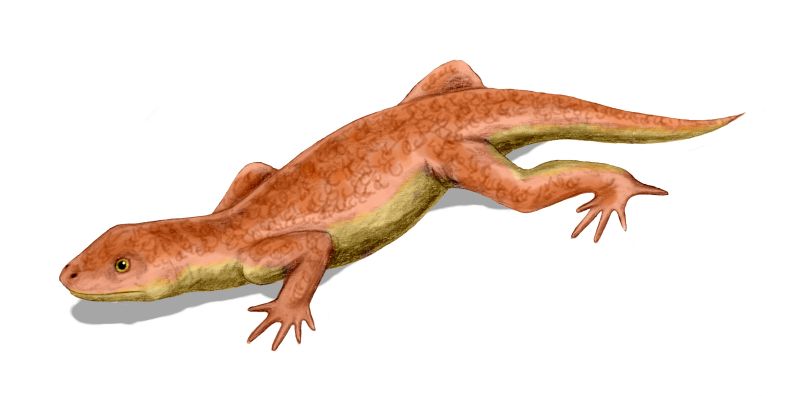- Parareptilia
Taxobox
name = Parareptilia
fossil_range =Permian toTriassic (without Chelonia); or Permian to Recent (if incl. Chelonia)

image_caption = "Nyctiphruretus "
regnum =Animal ia
phylum = Chordata
subphylum = Vertebrata
superclassis =Tetrapoda
classis = Sauropsida
subclassis = Parareptilia
subclassis_authority = Olson,1947
subdivision_ranks = Groups
subdivision = See cladograms belowParareptilia ("at the side of reptiles") is a subclass or clade of Reptiles which are variously defined as an extinct group of primitive anapsids, or a more cladistically correct alternative to
Anapsida . Whether the term is valid depends a lot on the phylogenetic position of turtles, the relationships of which to other reptilian groups are still uncertainThe name Parareptilia was coined by Olson 1947 to refer to an extinct group of Paleozoic reptiles, as opposed to the rest of the reptiles or
Eureptilia ("true reptiles").The name fell into disuse, until it was revived by cladistic studies, to refer to anapsida that were thought unrelated to turtles. Gauthier "et al." 1988 provided the first phylogenetic definitions for the names of many amniote taxa, including
Sauropsida as the parent clade forReptilia , and argued cladistically that captorhinids and turtles were sister groups, constituting the clade Anapsida (in a much more limited context than the definition given by Romer 1967). A name had to be found for variousPermian andTriassic reptiles no longer included in the Anapsids, and "Parareptiles" was chosen. However, they did not feel confident enough to erect Parareptilia as a formal taxon. Theircladogram was as follows: --oAMNIOTA
--Synapsida `--oSauropsida
--o "parareptiles "
|--Mesosauridae
`--+--Procolophonidae
`--+--Millerettidae
`--Pareiasauria `--oReptilia
---oAnapsida
|--Captorhinidae
`--Testudines `--oRomeriida
--Protorothyrididae `--Diapsida Laurin and Reisz 1995 presented a different cladogram, in which the Reptilia are divided into Parareptilia (now a formal taxon) and Eureptilia. The Captorhinidae are transferred to the Eureptilia, and the Parareptilia includes both early Anapsid reptiles and turtles, but not the Captorhinidae and Protorothyrididae. The mesosaurs are placed outside both groups, as the sister taxon to the reptiles (but still sauropsids). The traditional taxon of Anapsida is rejected as paraphyletic. This gives the following:
--o AMNIOTA
-- Synapsida `--o Sauropsida
-- Mesosauridae `--o Reptilia
--o Parareptilia
|-- Millerettidae
`--+-- Pareiasauria
`--+-- Procolophonidae
`-- Testudines `--o Eureptilia
-- Captorhinidae `--o Romeriida
-- Protorothyrididae `-- DiapsidaIn contrast, Rieppel, 1994, 1995; Rieppel & deBraga, 1996; and deBraga & Rieppel, 1997 have argued that turtles are actually related to sauropterygia, and hence are diapsids. The diapsid affinities of turtles have also been supported by
molecular phylogeny (e.g.
Zardoya and Meyer 1998). If so, this would mean that the Parareptilia would become a wholly extinct clade. However this hypothesis is not very widely accepted among vertebrate paleontologists, and Benton 2000, 2004, retains the traditional class Anapsida for the "parareptiles" and turtles.ee also
*
Anapsida References
*, 3rd ed. 2004 ISBN 0632056371
*
*
*
*
* ( [http://www.ingentaconnect.com/content/ap/zj/1995/00000113/00000002/art00007 abstract] )
*
*
*
*
*
*
External links
* [http://www.permiantetrapods.net/PARAREPTILIA.html Parareptilia]
* [http://dml.cmnh.org/2001Oct/msg00393.html re Reptilian Subclass Parareptilia?] -Dinosaur Mailing List archives
Wikimedia Foundation. 2010.
